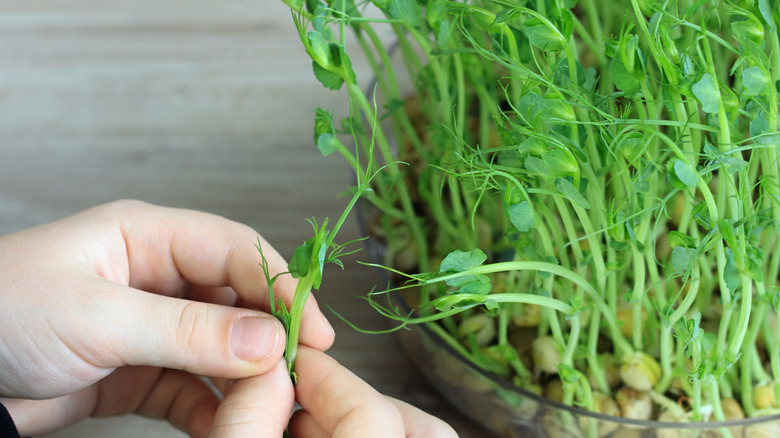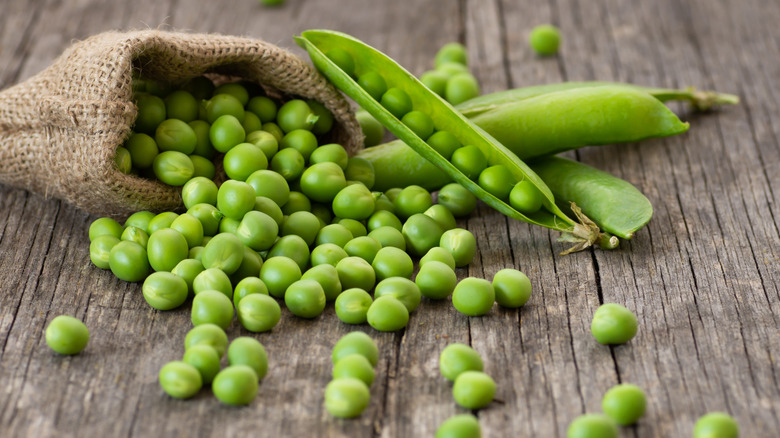The Versatile Vegetable You Can Grow Indoors Throughout Winter
Whether you're eating them raw for a crunchy snack with a veggie dip or adding them to a recipe like these chicken and snap pea skewers, there's nothing quite like fresh peas straight from the garden. While garden peas and snap peas are two of a few popular springtime favorites, what if we told you that you could grow your own peas all year round — no garden required? To gain insight, Food Republic spoke to Angelika Zaber, lawn care specialist and gardening expert with Online Turf. Zaber said, "Peas tend to grow well indoors during winter since they prefer cooler temperatures and generally do extremely well in a container."
It's a good idea to plant seeds in small containers, two inches apart, and use a seed starter mix to help them sprout. Next, you'll want to create the ideal growing conditions. Zaber explained, "To thrive indoors, peas need 8 [to]10 hours of light, temperatures below [65 degrees Fahrenheit], containers that offer good drainage, and the soil to always be moist."
To ensure your pea plants are getting enough light, place them by a south-facing window or another sunny area of the house. If you don't get a lot of sun during the winter, it's worth investing in some supplemental grow lights. Zaber said the pea shoots are ready to be harvested once they're firm and a deep green. "If you're growing shelling varieties, they should also be smooth on the outside," noted Zaber.
More tips for growing peas indoors
In addition to ensuring you have the right conditions to thrive indoors, the success of growing peas inside hinges on the variety you choose. While there are 40 different varieties of peas, Angelika Zaber recommended, "In general, dwarf and compact varieties of peas perform best indoors, such as Super Sugar Snap peas, Dwarf Grey Sugar peas, Little Marvel peas, and Green Arrow peas." It's worth noting that most of these grow on vines that require the support of a trellis, except for Little Marvel, which grows in a compact bush, making it more suitable for smaller spaces.
Keep in mind that peas aren't the only versatile veggie that you can grow indoors. One of the easiest veggies to grow is kale, and it also does well as an indoor crop. You might also want to consider other leafy greens like arugula, endive, lettuce, and microgreens, or even radishes, which can all be grown inside. If you don't have a lot of natural light or grow lights at your disposal, you can easily grow alfalfa sprouts (or other sprout varieties) in your kitchen. With so many great options at your disposal, waiting for garden-fresh veggie season will be a thing of the past.


